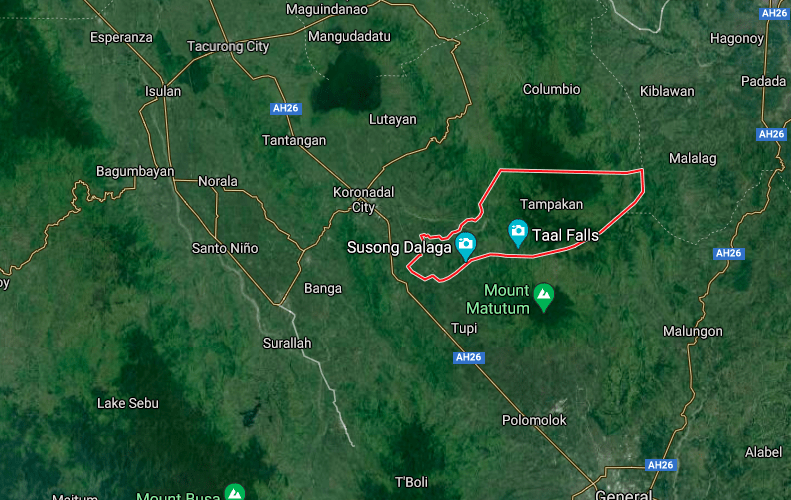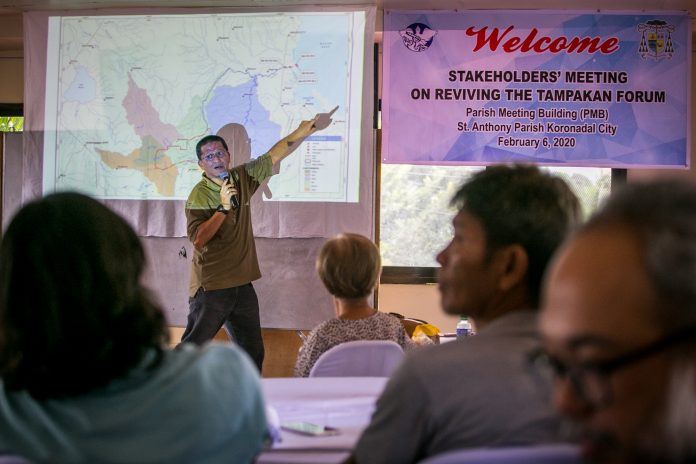A Catholic diocese in Mindanao has been designated “lead institution” to spearhead a movement aimed at protecting the largest gold and copper minefield in Southeast Asia.
Nearly 50 church and civil society organizations named the Diocese of Marbel as head of Tampakan Forum, a multi-sectoral movement against large-scale mining operations.
The diocese will also serve as the “hub” of various faith-based and pro-environment organizations engaged in various ecological issues in the southern Philippines.
Bishop Cerilo “Allan” Casicas of Marbel said the mission to protect the environment and heed the call of the indigenous people “is a mission not only of the Church but of an entire society.”
The prelate stressed the need to “continuously unify and consolidate” all forces into a multi-sectoral and interfaith movement because “the threats of destructive extraction still exist.”
“We must raise the knowledge and skills of all people and communities affected by the adverse effects of the Tampakan mining project,” said Bishop Casicas.
The copper-gold minefield in Tampakan town in South Cotabato province in Mindanao is the largest undeveloped copper-gold resource in the South-East Asia Western-Pacific region.
On March 22, 1995, the Philippine government issued a Financial and Technical Assistance Agreement (FTAA) to the proponents of the US$ 5.9 billion mining projects.
The FTAA, which expired on March 22, was awarded a 12-year extension by the Mines and Geosciences Bureau of the Department of Environment and Natural Resources last year.
It was considered as the single largest foreign direct investment in the Philippines.

According to the study conducted by its proponent, the Sagittarius Mines, Inc., the Tampakan mining project has the potential to yield an average of 375,000 tons of copper and 360,000 ounces of gold annually.
The project, however, is hampered by the open-pit mining ban imposed by the local government of South Cotabato since 2010.
Anti-mining activists claimed that the mining project will displace more than 1,000 tribal families in four provinces in Mindanao.
At least 32 percent of agricultural lands and 75 percent of forested areas in the provinces of South Cotabato, Sultan Kudarat, Saranggani, and Davao del Sur will be affected by the project.
The mining project is mostly located in ancestral territories of the B’laan tribal group and other tribal communities.
Bishop Valentin Dimoc of Bontoc-Lagawe, head of the Commission on Indigenous Peoples of the bishops’ conference, said the threats against the environment and the communities will persist if mining companies “will continue to exist.”
The prelate also called for an end to all destructive extraction activities in all tribal territories.
Archbishop Angelito Lampon of Cotabato lauded the efforts of the different organizations to “strengthen the movement to protect all creations amidst the restrictions brought by the coronavirus pandemic.”
“Through this collective action for ‘Our Common Home,’ we are already making a loud statement against any form of environmental degradation,” he said.
The prelate urged the lay faithful to support the campaign, which he said “a concrete ecological action,” against the destruction of the country’s “remaining lungs.”
On October 9, the Mindanao Eco-Convergence, which is under the national environmental program of the Catholic Bishops’ Conference of the Philippines, was launched.









